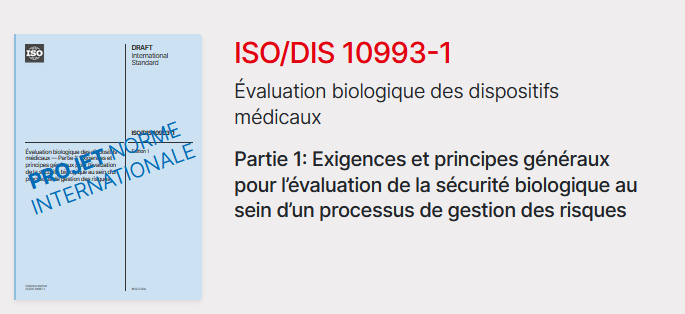In September 2023, the standard on toxicological risk assessment of medical device components (ISO 10993-17) was revised.
One year later, ISO 10993-1 is being revised, redefining the requirements and general principles for the assessment of biological safety as part of a risk management process (ISO/DIS 10993-1:2024).
The standard is reorganised to emphasise the integration of biosafety assessment into the overall risk management process (ISO 14971). Overall, the document is more precise and will provide more detailed guidance. Here-below are some of the things that will change.
Biological evaluation becomes biocompatibility evaluation, and misuse of the medical device will now have to be taken into account in biological risk assessment.
The Biological Assessment Plan will be documented and the Life Cycle of the medical device will be emphasised to take into account the entire life cycle of the device.
Annex A will evolve towards 4 contact categories and will provide details for calculating the duration of exposure. These changes will make it possible to better characterise the biological risks to be considered for each MD.
Animal protection is more clearly taken into account, with the need to comply with the 3Rs principles – ‘Refine – Reduce – Replace’ – and the use of in vitro/in silico models as a first instance when they are relevant and applicable.
Adjustments will be made to the terminology used, particularly with regard to biological effects and tissue contact.
The annexes will be completely revised, allowing for a more pragmatic approach to risk assessment according to the requirements of EU Regulation 745/2017 (Annex ZA).
This draft revision will lead to greater precision by taking into account the constituents and tissue-device interactions in order to ensure performance throughout the life cycle, as required by EU Regulation 745/2017. The need to use qualified, competent and experienced professionals is emphasised.
It is important to point out that this draft revision will not impose new tests for medical devices already on the market and with established safety profiles. Nevertheless, it will be necessary to re-evaluate historical data to determine the impact of this revision on the pre-existing assessment of the biological safety of the device.
Once the standard has been definitively revised, it also remains to be seen to what extent it will be recognised by the FDA.
If you are a medical device manufacturer wondering about the impact of this new standard on your CE markings, our team of experts will be happy to answer all your questions and help you update your dossiers.
Contact us at the following address: contact@equitox.eu.

